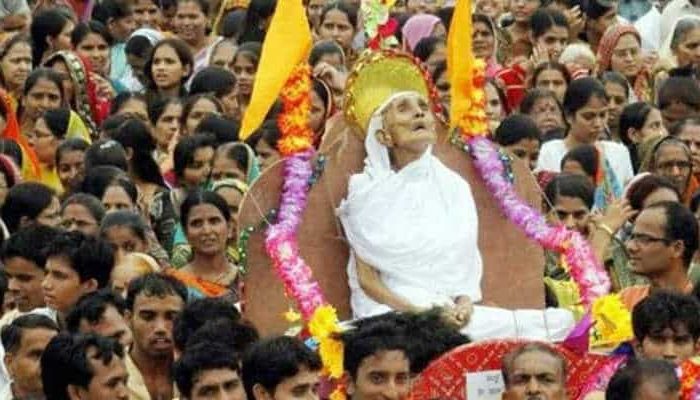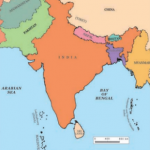The death of a 83 year old woman in Kolkata after embracing the Jain religious practice of Santhara has once again put the spotlight on the Santhara debate that erupted in 2015.
Contents
Santhara is the last vow prescribed by the Jain ethical code of conduct. It is fast-unto-death i.e. one gradually stops the intake of food and liquid till death.
Significance
- Swetambara Jains call it Santhara while Digambars call it Sallekhana.
- It is voluntarily adopted by those who are convinced that their life-mission has been completed, and who have therefore chosen the path of imposing the least possible burden on the ecology around them.
- The vow of Sallekhana cannot be taken by a lay person on his own without being permitted by a monk.
- It is a highly respected and disciplined practice among the members of the Jain community considered to lead one to extreme purity.
Santhara and Rajasthan High Court Case
- A Jaipur-based lawyer Nikhil Soni filed a public interest litigation and sought directions under Article 226 to the central and state governments to treat Santhara as illegal and punishable under the laws of the land in 2006.
- The petition extends to those who facilitate individuals taking the vow of aiding and abetting an act of suicide.
- Calling and comparing it with suicide and, therefore, a criminal act, the PIL also sought prosecution of those supporting the practice for instigation to suicide.
- The PIL argued that death by Santhara was not a fundamental right under Article 25 because it violated the right to life guaranteed under Article 21. It argued that religious freedom is subject to public order, morality and health.
Rajasthan High Court Orders on Litigation
- Churu is called “Santhara capital of world” with highest number of cases every year.
- The court compared the practice with suicide.
- It said that Jain scriptures or texts don’t say that Moksha (salvation) can be achieved only by Santhara/Sallekhana.
- According to the judges, it is a permissible religious practice protected by Articles 25 and 26 but not acceptable according to Article 21.
- The court banned and asked the state to stop the practice in any form.
- It directed that any complaint made in this regard be registered as a criminal offence in accordance with Section 309 (attempted suicide) or Section 306 (abatement to suicide) of the IPC.
Reaction from Jain Community
- Representatives for the Jain community have time and again argued that Santhara is an ancient religious practice aimed at self-purification.
- To many Jains, death by Santhara is an act of supreme forswearing and great piousness, which only the most spiritually pure undertake.
- They also argue that it is a process of slow death with self-acceptance and therefore courts allegations of comparing this ritual with suicide is absolutely wrong as that is a fast process.
- It is also argued that suicide is done in sadness, anger and agitation but the vow of Santhara is taken when all purposes of life have been served, or when the body is unable to serve any purpose of life.
- It is not the giving up of life, but taking death in their stride.
- No government has formulated an official line, but politicians, including ministers, have condemned and censured the judgment.
- While the court’s judgment has been criticized as being shallow and thoughtless, religious communities are frequently touchy about intervention in their religious practices.
- The protests and appeal against the High Court order was also driven by apprehensions that if an immediate challenge was not mounted, similar PILs may be filed in other states.
- On 24th August 2015, the community took out massive silent rallies in several cities and towns. In meetings held before the rallies, members of the community openly criticized the judges, calling them ignorant and disrespectful of religious practices.
Opposition by some people.
- Human rights activists allege that it’s a social evil, and old people are made to undertake Santhara by family members who don’t want to look after them for a variety of reasons.
- The petition in the High Court compared the practice with that of Sati.
- Also according to a documentary the practice is more common as forced onto elderly people specifically old widows rather than someone practicing it deliberately.
- Reports say there are 200 cases of Santhara every year but it is also evident that these are the cases that are directly accepted and approved by Jain higher communities. What about those cases that didn’t come in spotlight?
Supreme Court and its order.
- On 31 August 2015, Supreme Court of India stayed the decision of Rajasthan High Court and lifted the ban on Santhara.
- Supreme Court considered Santhara as a component of non-violence (‘Ahimsa’).
- The petitions complained that the High Court criminalized the philosophy and practice of Santhara, based on incorrect observations on Jainism.
- The petitions said the High Court order infringed on secularism.
- It said that High Court criminalized Santhara without even consulting any scholars of Jainism or findings to substantiate that the practice was against public health, morality and order.











